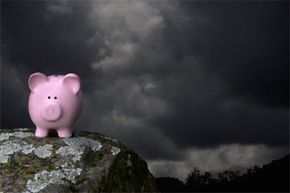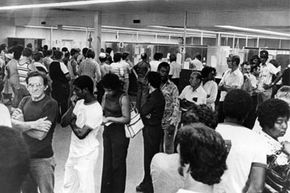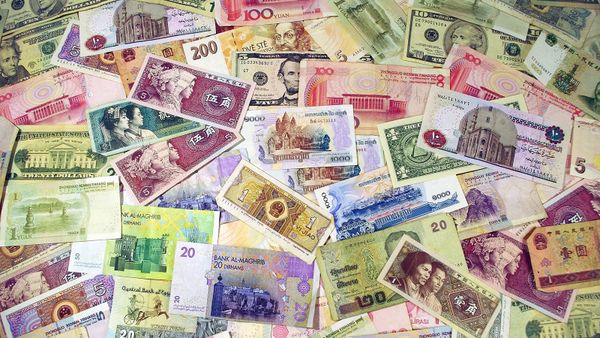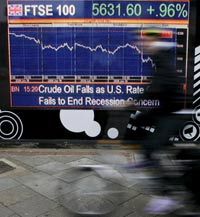Stagflation is term that describes a "perfect storm" of economic bad news: high unemployment, slow economic growth and high inflation. The term was born out of the prolonged economic slump of the 1970s, when the United States experienced spiking inflation in the face of a shrinking economy, something economists had previously thought to be impossible.
The word stagflation is a contraction of "stagnant" and "inflation." When the economy is stagnant, it means that the gross domestic product (GDP) -- the standard measure of a nation's total economic output -- is either growing at a very slow rate or shrinking. The natural result of economic stagnation is increased unemployment. Businesses lay off employees to save money, which in turn decreases the purchasing power of consumers, which means less consumer spending and even slower economic growth.
Advertisement
Economic slowdowns are a normal part of the macroeconomic cycle [source: Samuelson]. When financial speculation gets out of hand (as it did with the technology stocks of the late 1990s and the housing market of the mid-2000s), the market needs to stabilize itself. This usually happens through a temporary, if painful, recession.
But here's the difference between a recession and stagflation: The prolonged period of slow economic growth is coupled with high rates of inflation. Inflation is the ongoing increase in prices for goods and services, but it can also be described as an ongoing decrease in the buying power of money. In a normal year, inflation might rise two or three percentage points. If the rate of inflation begins to rise past 5 or even 10 percent, things can get hairy.
This is why stagflation is so dangerous. Imagine a scenario in which you have both a sinking economy and runaway inflation. With high unemployment, consumers have less money to spend. Add inflation, and the money they do have is worth less and less every day. If you're on a fixed income, inflation erodes the value of your monthly check. And if you've managed to save some money, inflation eats away at its value, too. Inflation is a real confidence killer in an already depressing economic environment [source: Ryan].
Prior to the 1970s, economists thought it was impossible to have both a stagnant economy and high inflation. According to the economic principles of John Maynard Keynes, an influential British economist, inflation was a byproduct of economic growth. For Keynesians, it's all about supply and demand. When demand is high -- as it is during a booming economy -- then prices go up.
What the Keynesians didn't realize was that there were other powerful economic forces that could throw inflation into an upward spiral. To really understand how stagflation works, you have to take a trip back to the 1970s. Read on to learn more about this economically depressing decade of oil embargos, brownouts, gas lines and crazy inflation.
Advertisement



